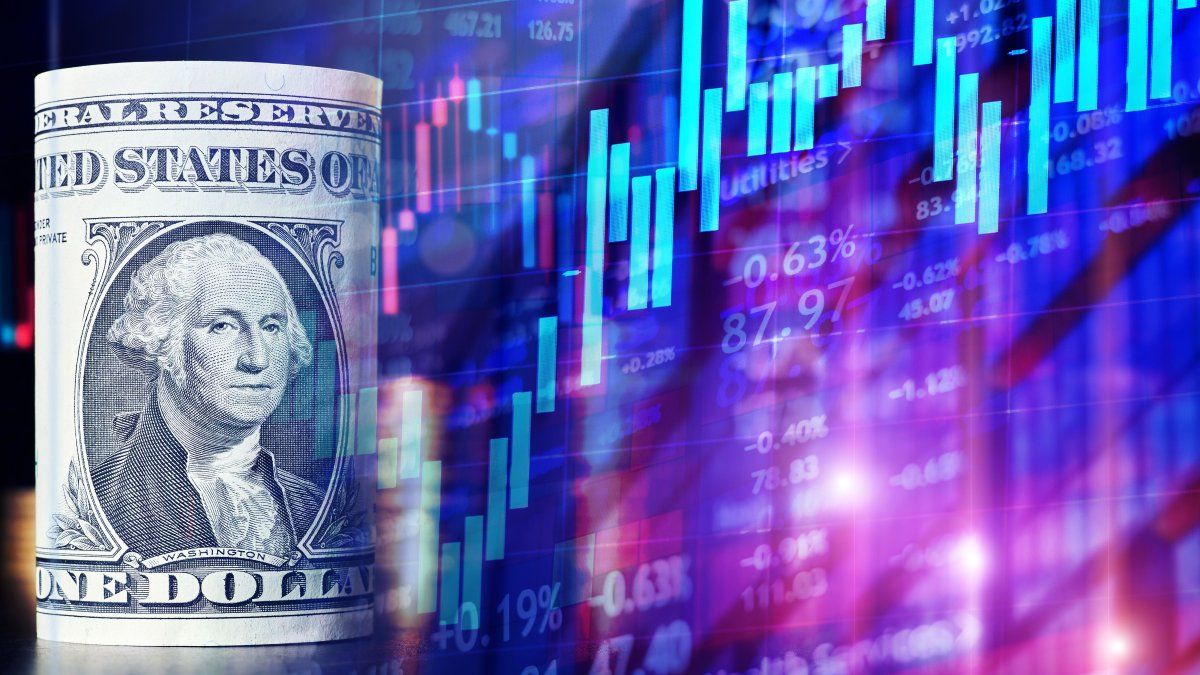He blue dollar touch its lowest value in 14 days this Wednesday, after having gone bankrupt a key level the day before, the $1,200. This is in line with the evolution of deposits in dollars purchases of reserves by the Central Bank (BCRA) and the dynamics of Cash With Settlement (CCL) and the MEPwhich are falling. The end of the first stage of extended laundering arrives this Thursday and city analysts anticipate how the evolution of parallel exchange rates will continue. The blue fell $70 (-5.4%) in September, the first full month of the whitening, compared to the close of August. Will October complete three months with a bearish trend?
It is worth remembering that a month ago, through Decree 864/24, The Government ordered the extension of the first stage of laundering, which will come to an end this Thursday, October 31, and the city’s analysts are beginning to analyze how this will impact the evolution of the dollar given that the flow of deposits in foreign currency that it promoted This asset externalization regime helped the Central Bank (BCRA) to increase reserves and that encouraged the decline in alternative exchange rates seen in recent days.
“Due to money laundering, credit in dollars and the slight but sustained purchase of the greenback by the BCRA, reserves increase and this constitutes a vector of downward trend for the blue. In the same sense, The ‘carry trade’ implies a process that tends to temporarily get rid of dollars to capitalize them in pesos,” describes the economist Pablo Ferrari. For him, these factors are fundamental to explain the downward trend of blue in this period.
In addition to money laundering, the shortage of pesos plays a role in the decline of the blue dollar
Likewise, it has a strong impact the shortage of pesos that the Government has been fueling with its decision to absorb liquidity of the market, which has been going on for several months now. In this context, it is noticeable, at this time, a strong drop in parallel dollars, with a blue that gives up $30 in two days and operates at $1,195.
Thus, it is clear that there are several elements that determine the exchange rate dynamics. “I do not believe that the fate of the blue dollar depends exclusively on the asset externalization process. In theory, those funds are somehow in circulation and sooner or later they can make an impact, but many withdraw the funds and put them back into storage. I believe that the price will depend on the pesos in circulation and in that sense, it seems to me that the monetary restrictions will be felt,” he says in this regard. Gustavo Quintanafrom PR Change Operators.
Quintana points out that a fact that must not be forgotten is that The blue is today noticeably below the card and tourist dollar, so that “whoever makes travel or consumption plans abroad has more incentive to buy in the blue to pay the expenses incurred.” In the same sense, the analyst Andrés Reschini, from F2 Soluciones Financieras, indicates that in recent weeks there was “some demand for dollars to cancel cards given that the tourist dollar is worth over $1,600.”
This meant that last week, for example, the blue dollar rose slightly at the beginning, but then ended with no price change on Friday compared to Monday. And the supply has been offset in recent days by an increase in supply.
Blue dollar: a calm perspective forward and a warning
However, beyond these oscillations, Reschini maintains that he does not see the market worrying about the blue. “If inflation brings good news and progress is made in clearing up doubts regarding the payment of sovereign debt, I do not see exchange rate tension on the near horizon,” he anticipates.
Ferrari agrees with this vision and maintains that, “as long as the Government can guarantee the entry of dollars, for which it has committed a REPO, it negotiates with the Monetary Fund, waits for funds from the World Bank and works with various banks to receive loans, and the economy remains depressed, it will be able to sustain this trend in the exchange market in the medium term, at least.” However, he warns that this will be closely tied to the amount of funds that they can obtain.
And, in that sense, the analyst known as the “blue guru”, Salvador Di Stefano, wait that the dollar remains flat around $1,050 and $1,150 and maintain a distance of around 10% from the wholesaler. “People are going to tend to sell more dollars than to buy because Argentina today is not providing great profitability and companies have to resort to their savings, which are usually in dollars, to invest in process improvements and improve production costs. the production.
In short, Di Stefano anticipates that the dollar will continue to be offered going forward and warns that we must be careful that this causes the price of the dollar to drop too much. “It is not advisable to continue selling dollars because, in this way, we risk losing the blue floor“he points out.
Source: Ambito
David William is a talented author who has made a name for himself in the world of writing. He is a professional author who writes on a wide range of topics, from general interest to opinion news. David is currently working as a writer at 24 hours worlds where he brings his unique perspective and in-depth research to his articles, making them both informative and engaging.




